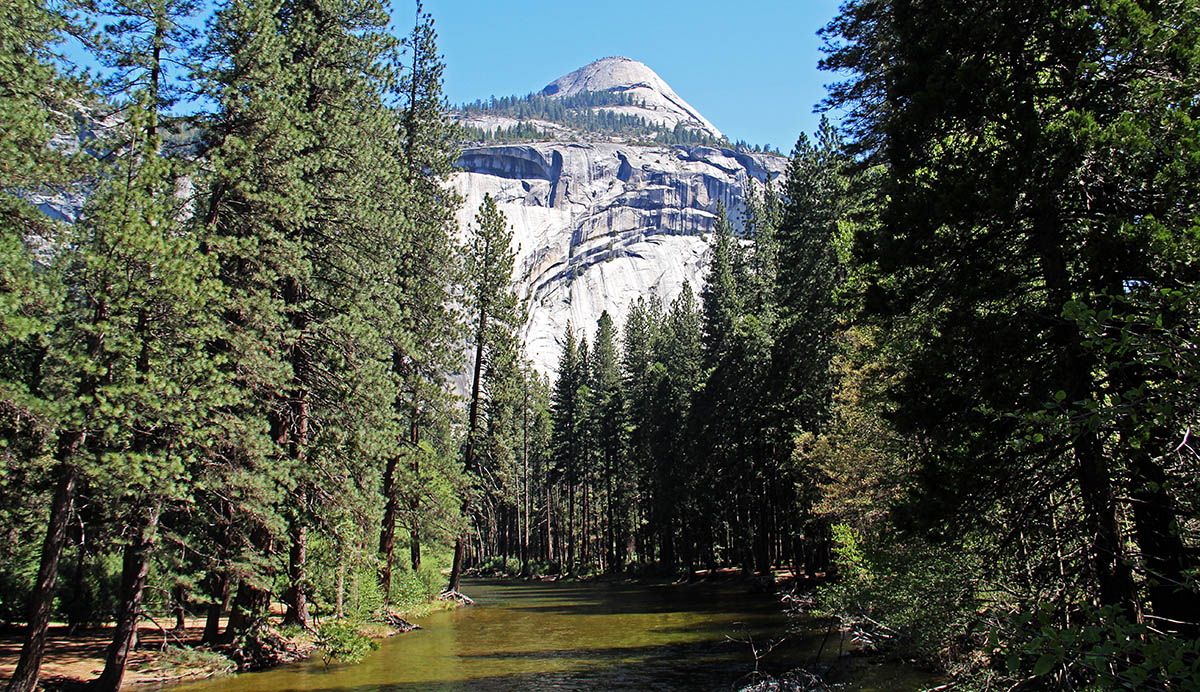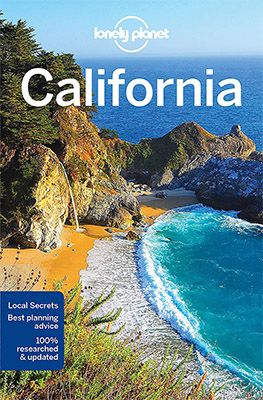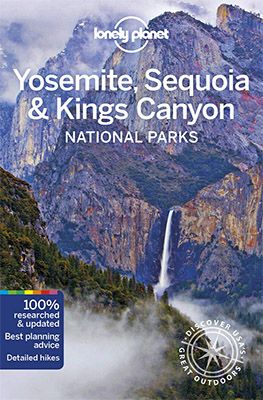Cycling and hiking in Yosemite National Park
Cycling and hiking in Yosemite National Park
One of the first national parks in the United States was the Yosemite National Park in California, which has also been on the UNESCO World Heritage list since 1984. The over-3,000 km² vast park is located west of the central part of the Sierra Nevada. As is often the case with us, our time was far too short so we will definitely go back as soon as we have visited the other large, famous parks in the west of the US.
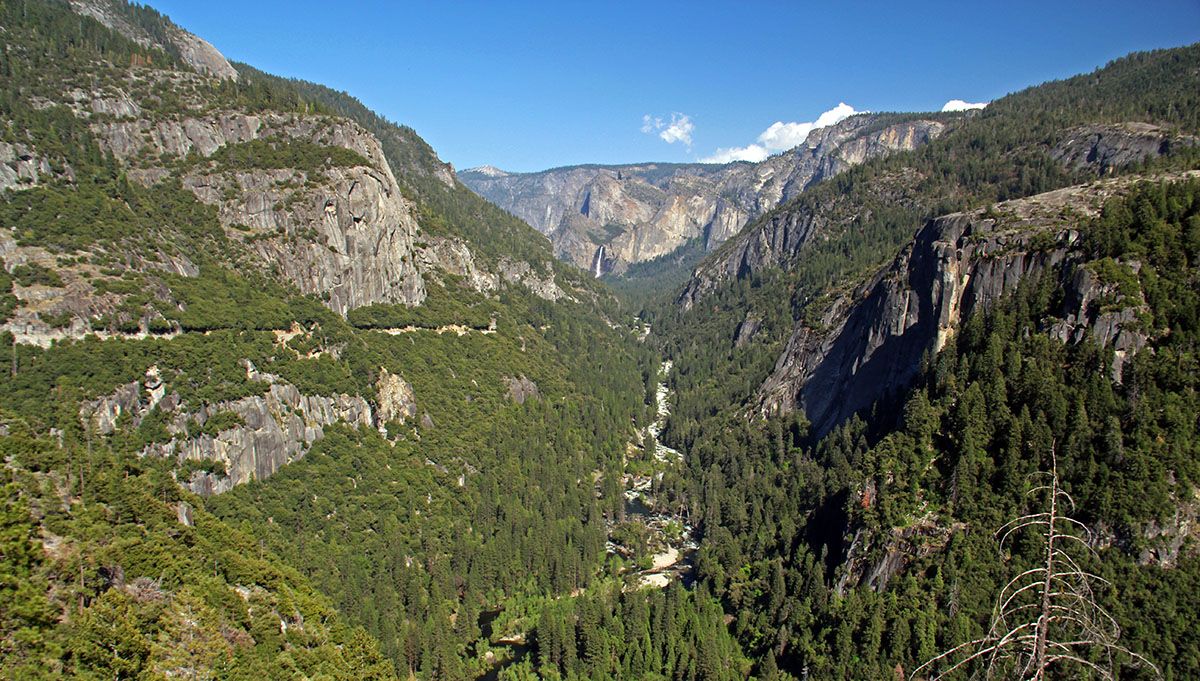
The biologically very diverse park is best known for the Yosemite Valley, one of the two large glaciated valleys. We were there in the month of May in the spring; a perfect time of year because you see many waterfalls. Besides the two beautiful valleys surrounded by granite rock walls (Yosemite Valley and Hetch Hetchy) the park offers crystal clear mountain rivers from the high mountains and giant redwoods.
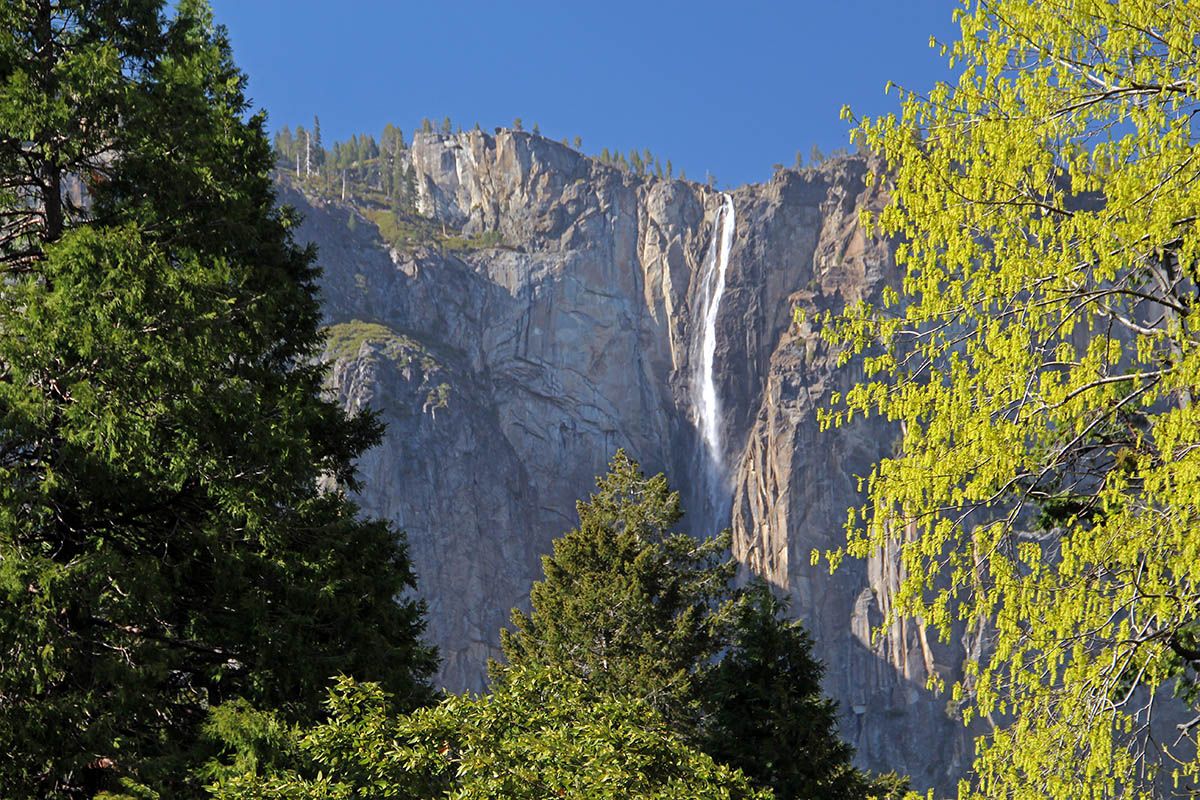
Half Dome In Yosemite Valley
In Yosemite Valley, you have two well-known rock formations. The first is ‘Half Dome’ which towers almost 1,500 metres above the valley. There is a long walk to the top which for most people is quite a challenge and an adventure but one that is more than worthwhile. You need to be in good shape, because of the altimeters you do. What’s more, count on 12 hours to walk there and back. The last 100 metres are very steep. The only help you have are two steel cables that you can hold on to.
You need a permit for this iconic hike, for which a maximum number of hikers per day applies. On the basis of a kind of lottery, the application for a permit will or will not be accepted. You can apply for the permit via recreation.gov.
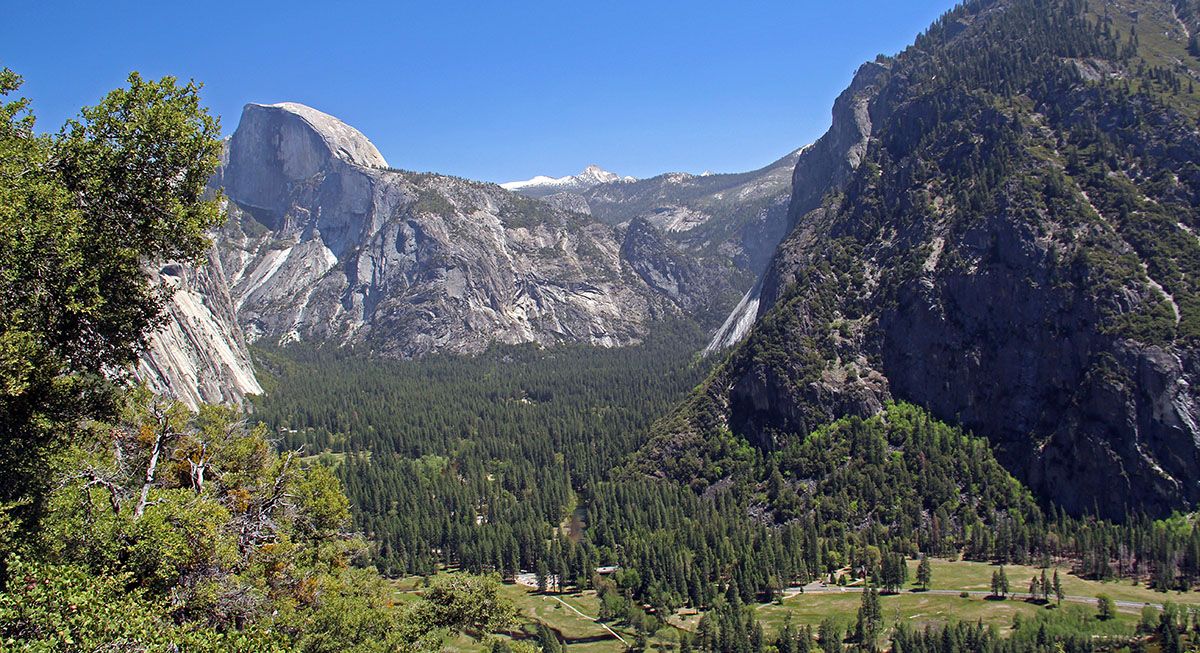
El Capitan in Yosemite Valley
The other perhaps even more famous rock formation is El Capitan, a 900-metre-high granite mountain wall that is famous among mountaineers for its very difficult climbing routes. El Capitan is a beacon for visitors to the park; you simply cannot ignore it. For photographers, it is certainly a magnificent rock, one from the booklet. As we are not mountaineers we have not gone into any more depth on El Capitan.
The Mist Trail – the typical hike in Yosemite
To avoid having to start a walk tired, we, as true Dutchmen, got a bike with which we toured through the area. We put the bike aside a few times for a short or medium-length walk. We saw the Bridalveil Falls in Lower Yosemite as well as doing the Mirror Lake & Tenaya Canyon walk, with the slightly-more challenging, but oh-so-beautiful Mist Trail to Vernal Fall as a fantastic finish.
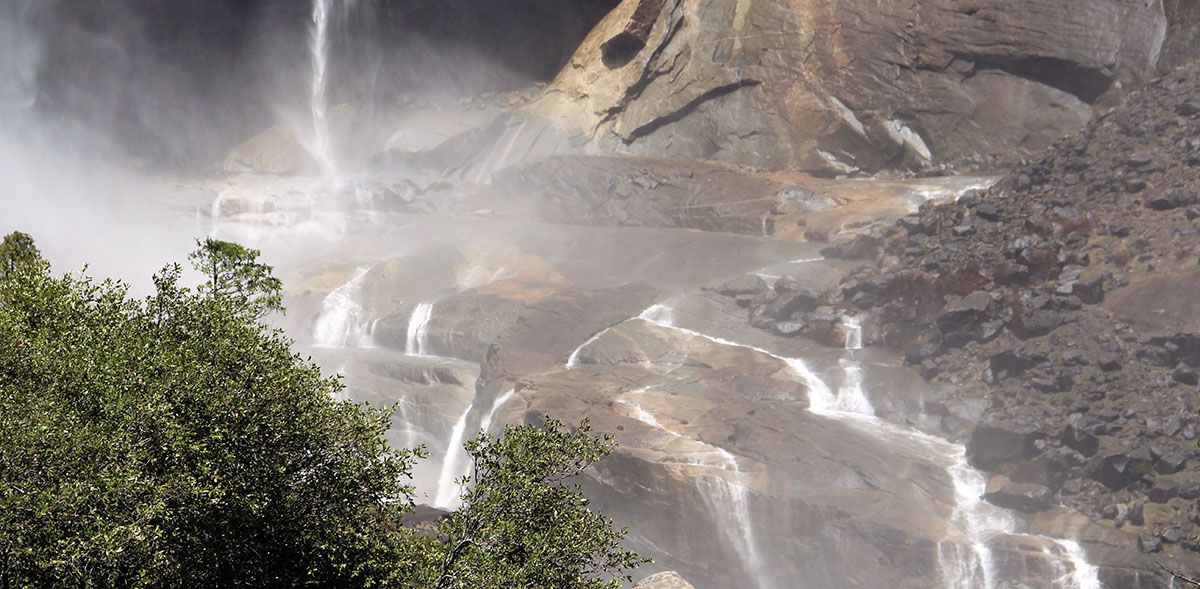
The Mist Trail is the typical Yosemite hike. Many of the popular hiking trails in the park have a single destination that the hike is all about, such as the top of a particular rock. The Mist Trail, on the other hand, offers amazing views of the valley and many waterfalls along the way. The hike, which takes about 4 hours in total and which takes you to almost 600 metres’ altitude, was what we found to be the highlight of our stay in the beautiful park.
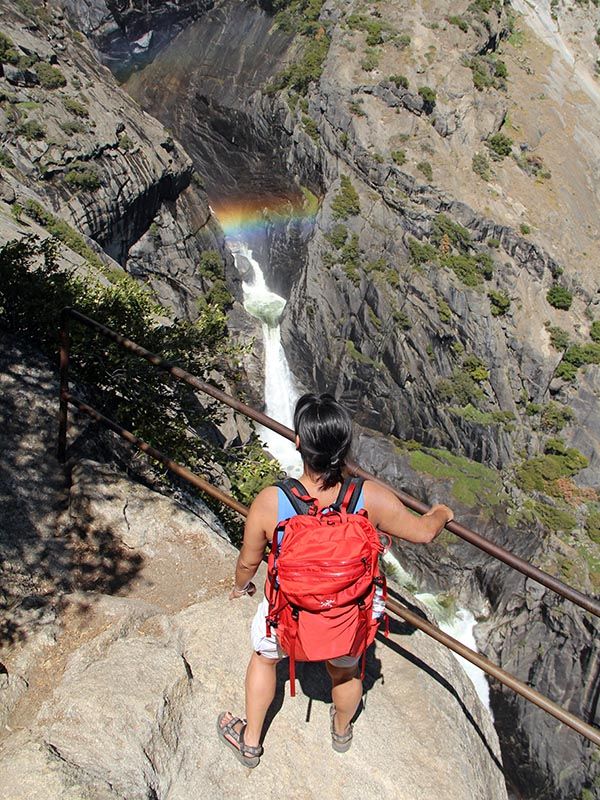
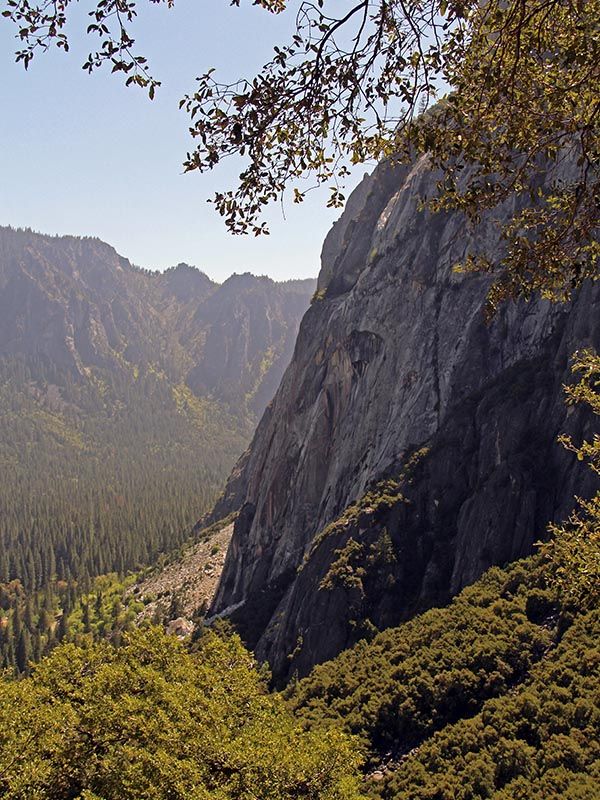
Practical matters
Accommodation in Yosemite National Park
The famous park offers many accommodation options. From luxury hotels such as the Majestic Yosemite Hotel and comfortable lodges, to campsites for tents and/or camper vans. We stayed in a furnished, canvas tent in the Half Dome Village. In this luxurious campsite-like park you have a spectacular view of Glacier Point and Half Dome. A stay in the park is not cheap, not even in the Half Dome Village, but it is definitely worth a recommendation! Keep in mind that it can cool down considerably at night. Ask for more blankets in advance!
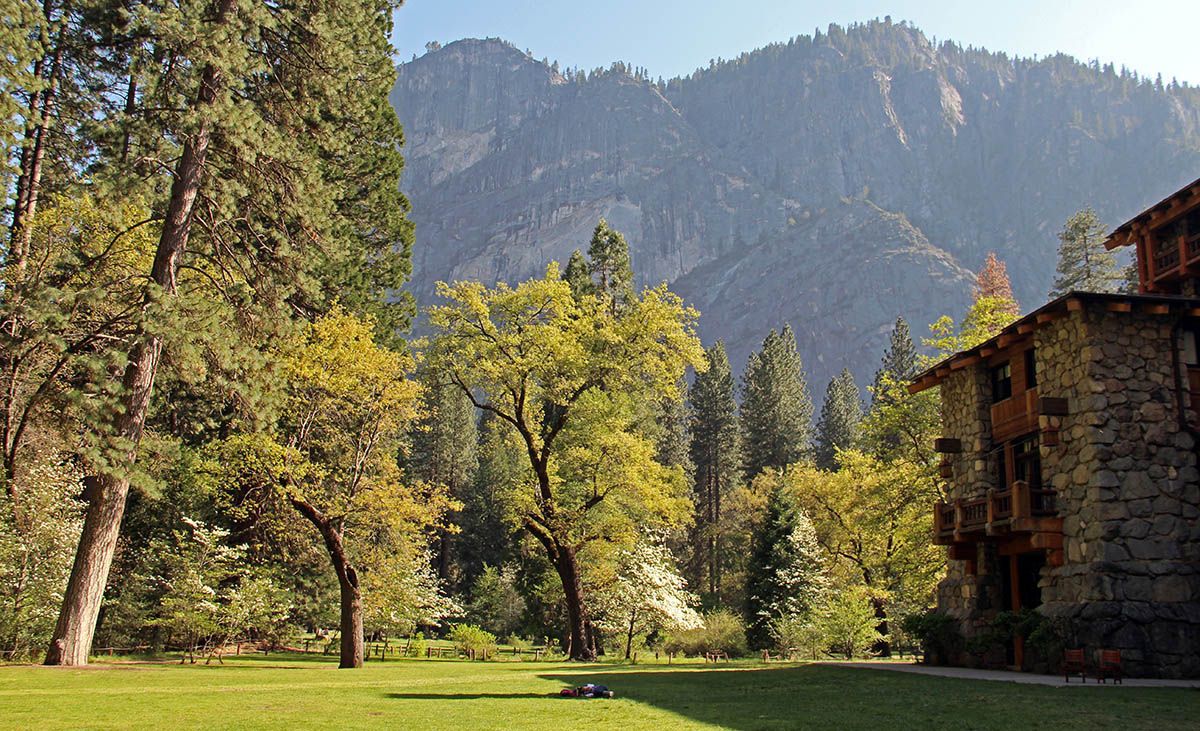
Best travel time
Spring is undoubtedly the best time to visit the Yosemite Valley. The waterfalls are at their best, wild flowers bloom and you skip the large crowds of people visiting the park in summer. Temperatures are great during the day but as mentioned in Accommodation, it can get chilly at night.
How to get there
The park is accessible from the west via Highway 41, 140 or 120 from the west. Entrance via the Tioga Pass in the east (Highway 120) is closed between November and the end of May. You can come with your own rental car or camper van but make sure you have booked your accommodation well in advance. Another option is to use free buses that take you from outside the park to the park itself.
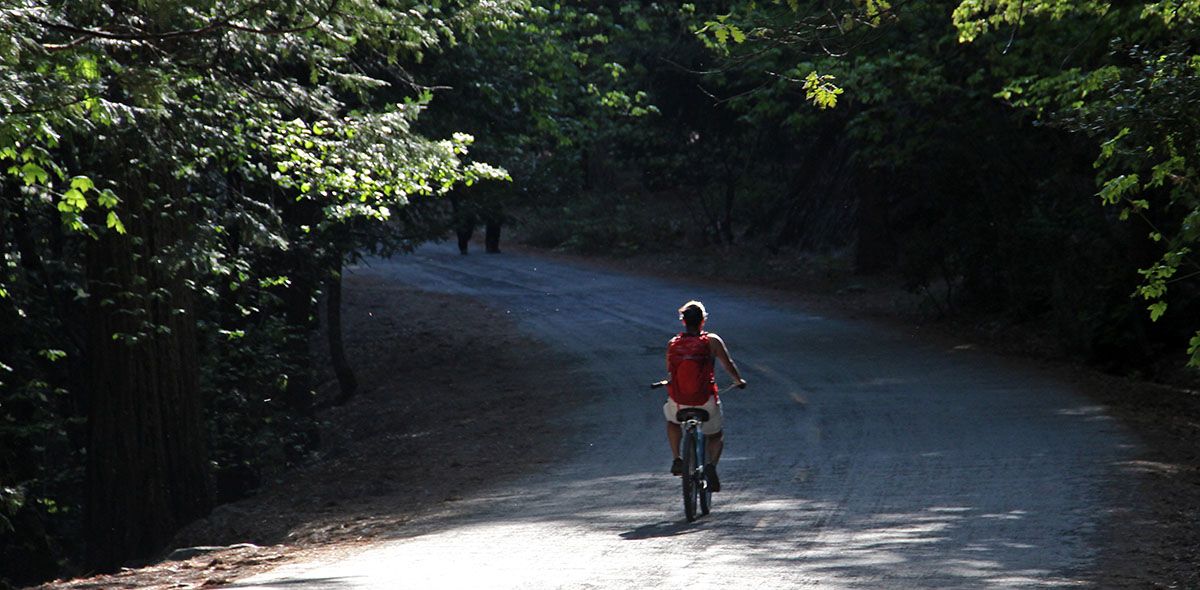
What else can you do?
The large national park offers something for everyone. You can go cycling (as we did), fishing, golfing, rock climbing, hiking, rafting, skiing or snowboarding, etc. You even have spas and Mariposa wine tastings.
Healthcare
- Mosquitoes are particularly active in the evening and early in the morning. Wear long trousers and long-sleeved clothing then and use a mosquito repellent. Some mosquitoes cause more than just itchy mosquito bumps as they can carry nasty diseases.
- Prevent being bitten by ticks by staying on the paths as much as possible and not walking through high grass and mountains of fallen leaves. Preferably use DEET or permethrin spray. After your walk, check your skin for ticks.
- If you notice that rodents have been active in your tent or room, warn the park staff and do not clean up any mess yourself. Rodents can transmit nasty infections!
- If possible, get vaccinated against rabies prior to your trip. If this does not work and you are bitten, make sure you get immediate treatment.
- If you want to drink water from a stream or river, treat it before consumption by boiling the water or putting a filter tablet in it.
